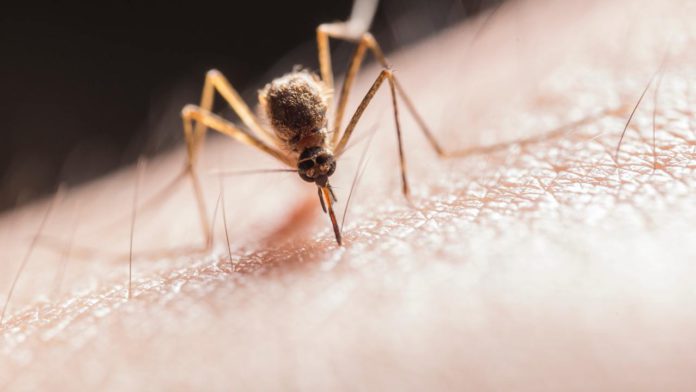Malaria is still among the top 10 Out-Patients Department (OPD) cases recorded between 2016–2019 in Western and Western North regions, accounting for about 27 percent of OPD attendance.
ALSO READ:
- Notorious armed robber who raped and killed 20yr-old lady shot dead at Yeji
- How bees killed 74-year-old farmer at Nsawkaw
- City Escape invasion: Sam George shares inside story
Dr. Kofi Asemanyi-Mensah, the Deputy Director of Public Health in the Western Region, who made this known to the Ghana News Agency, said, “Malaria remains endemic and ranks as the leading cause of morbidity and mortality of Outpatient attendance.”
He said Institutional Malaria under five case fatality rates for Western North reduced from 0.10% in 2018 to 0.09 in 2019.
He indicated that tests and appropriate treatment, training on malaria case management, monitoring and supervision, availability of drugs, and auditing of all malaria deaths were some of the contributory factors for the achievement.
Dr. Asemanyi-Mensah noted that the entire population was at risk of the disease but pregnant women, children under five years, and the immuno-compromised were the most at-risk groups.
The Ghana Health Service is implementing several interventions to deal with the disease.
They include; distribution of Long-Lasting Insecticidal Nets (LLINs) and mass campaigns as well as replacement in every three years, continuous distribution through health facilities and primary schools, Intermittent Preventive Therapy in Pregnancy (IPTp), Use of sulphur oxide – pyrimethamine (SP) for pregnant women and Case Management.
The rest are; Prompt and accurate treatment in the health facilities:
public& private Health Facility, testing before treatment-microscopy/RDTs-Parasite based diagnosis (Microscopy and RDT), and Artemisinin-based Combination Therapies (ACTs).
Dr. Asemanyi-Mensah said the proportion of children due for Measles-Rubella two receiving LLIN for Western Region increased by two percentage from 88% in 2018 to 90% in 2109.
Similarly, Western North Region increased by three percentage from 94% in 2018 to 97% in 2019.
He attributed the gains to continuous monitoring and supervision as well as the availability of nets in facilities.
He also said suspected malaria cases that were tested for malaria before treatment had generally improved. “This is probably due to adherence to the treatment protocol, monitoring and supervision, availability of test kits, and regular feedback”.
Intermittent Preventive Therapy in Pregnancy (IPTp) Coverage for the Western region increased by six percentage from 45% in 2018 to 51% in 2019.
Dr Asemanyi-Mensah lauded clients for their compliance with pregnancy schools and home visits by health staff that had resulted in the increased coverage.
He said the 2019 school distribution of LLIN was carried out in 23 districts of the region.
Activities towards the school distribution focused on Training, Social Behaviour Change Communication (SBCC), Validation with Schools’ Health Education Programmes (SHEP), and Health Management Teams in both regions.
In all, a total of 150,130 pupils in both 1,620 public and 947 private schools received nets as against 148,291 pupils targeted for the campaign, representing 98.7% coverage.
The theme for this year’s malaria day celebration is: “Zero Malaria Start With Me,” which Dr Asemanyi-Mensah said it was important people took actions to ensure everyone is protected from malaria and COVID-19.
“Just as we ought to wear the mask, sanitize our hands, practice social distancing, and wash our hands with soap under running water, so must we take charge of our health, and that of our families, and practice the precautionary of malaria by sleeping under an insecticide-treated net, testing for malaria before treatment and pregnant women should take the recommended dose of sulphur oxide–pyrimethamine to keep themselves and unborn babies from malaria,” he added

